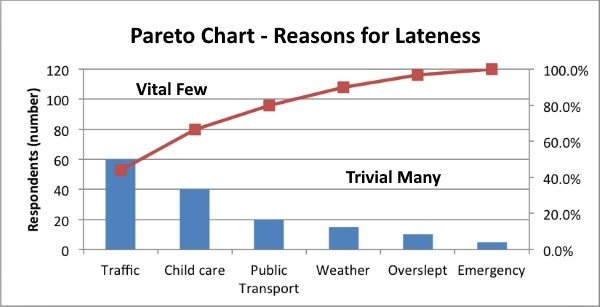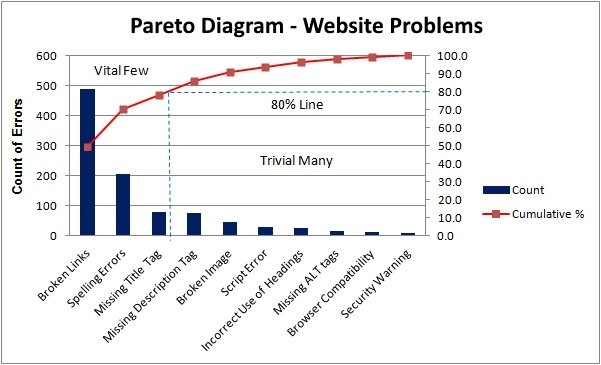People frequently refer to the 80-20 Rule in casual conversation. But did you know this law comes from the work of an early 20th-century Italian sociologist and economist, Vilfredo Pareto?
Pareto determined mathematically that, while a great number of factors contribute to a given outcome, only a few carry the weight to change that outcome in a significant way. Roughly 80% of effects or outputs come from 20% of the causes or inputs.
Stated simply, a few things are responsible for the majority of results in a given situation, system, or organization.

For example, you might observe that 20% of the food you eat packs on 80% of the calories. Twenty percent of your monthly bills consume 80% of your income. I’ll even bet you wear 20% of your clothes 80% of the time?
According to Woody Allen (comedian/movie producer), 80% of success is showing up.
Focus Your Improvement Efforts
The 80-20 Rule is extremely helpful in bringing clarity to complex situations and problems, especially when deciding where to concentrate effort and resources. The following are a few examples of the Pareto Principle. They would tend to be true across a range of mature businesses.
- 20% of customers account for 80% of sales.
- 20% of products account for 80% of profit.
- 20% of advertising campaigns produce 80% of the sales leads.
- 20% of the products or services cause 80% of customer complaints.
- 20% of a person’s work consumes 80% of their time.
You get the idea.
When looking for the root cause of errors, mistakes, and defects in your business operation, you will often discover that 80% of the problems come from 20% of identified causes, as illustrated by the graph below. Remedy the few problems that happen most frequently (highest number of occurrences), and you will see a significant improvement in the business process.

Keep in mind that Pareto observations are not necessarily good or bad. For example, if only 20% of the roads in a town handle 80% of the traffic, that could be good for a maintenance crew who can concentrate on fewer roads. However, it could be bad for commuters who travel across the busy roads. City planners may use this information in a strategy to redirect traffic to less-used roads.
You can also utilize the 80-20 disproportions to your advantage. For example, stores like Wal-Mart and COSTCO only carry books that are best sellers—the 20% of book titles responsible for 80% of national book sales.
The Vital Few vs. the Trivial Many
In your business, a few activities exert the greatest influence on achieving organizational goals. Give your attention to the business processes that matter most, those responsible for finding and keeping customers, and that provide the biggest financial payoff.
Remember: The management of details is critical to success—but not all details are of equal importance. Within a specific system or process, Pareto teaches us to recognize the difference between the vital few (20%) variables or details, and the trivial many (80%). Give the most attention to improving your weak links and removing bottlenecks!
The Pareto Principle is sometimes known as the Law of Least Effort. Prioritize and focus your effort for fast results. A few targeted improvements can be leveraged to create significant benefits within your operation.
What business process or activity could you elevate today that would help your company leap to the next plateau?
And if you have a second, take a quick look at the quality improvement tools—including Pareto Analysis (scroll down page)—in Box Theory™ Software.







